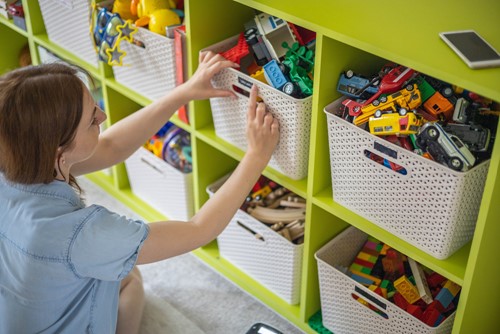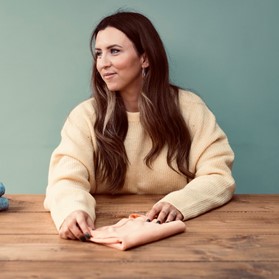The Art of Toy Taming
A Guide to Organising Your Child’s Play Space.

Children's toys, while essential for fostering creativity and imagination, can quickly turn into a chaotic mess if not organised properly. You’re certainly not alone if you often find yourself swimming through a sea of toys, searching for that elusive missing puzzle piece or a favourite teddy.
But fear not! It may not feel it, but creating an organised and functional space for your children to play is both achievable AND beneficial.
Here are some practical tips and strategies to bring order to your world of toys:
1. Declutter and Sort
The first step to effective toy organisation is decluttering. Regularly assess your child's toys and set aside those that are broken, no longer age-appropriate, or simply not played with. Once you've streamlined the collection, sort the toys into categories, such as role play, building, music, crafts etc. This process not only makes it easier to organise but also helps you to identify which toys are most frequently used.
2. Designate Play Zones
If you have enough space to do so, it’s helpful to define distinct play zones in your home based on the type of activities. For example, you could create a reading nook with a cosy rug and bookshelf or book basket; a building and construction zone for blocks and Lego; and a creative arts and crafts corner. This zoning approach not only adds structure to the play area but also encourages children to engage in different types of play.
3. Storage Solutions
Invest in storage solutions that cater to the specific needs of each play zone. Clear plastic bins or labelled baskets work well for smaller items like building blocks or art supplies. Shelving units and bookcases provide easy access to books and larger toys. Consider using a combination of open and closed storage to strike a balance between accessibility and a tidy appearance.
4. Rotate Toys
Avoid overwhelming children with an excess of toys by implementing a toy rotation system. Store some toys out of sight and reach, and periodically swap them with the ones currently in use. This not only keeps the play area fresh and exciting but also prevents clutter from accumulating.
5. Involve Your Child
Encourage your child to participate in the organisation process. Make it a fun activity by turning it into a game or challenge. Allow them to choose where certain toys should be stored or decorate storage bins with their artwork. When children feel a sense of ownership over the organisation, they are more likely to maintain the order.
6. Label Everything
Clearly label storage bins and shelves to make it easy for both you and your child to identify where each toy belongs. Use pictures or illustrations for younger children who may not be able to read yet. A labelling system fosters a sense of responsibility and helps children develop organisational skills.
Organising children's toys may seem like a daunting task, but it’s worth it. If you follow these steps, not only will your daily clean up become quick and easy, but you will also create a play space that is conducive to creativity and learning – setting the stage for happy and stress-free playtime for both parents and children alike.

Sophie Liard, mum of two, also known as "The Folding Lady", is a global content creator focussing on home organisation. She shares her real-life tips, and tricks online, find her on Instagram @thefoldinglady